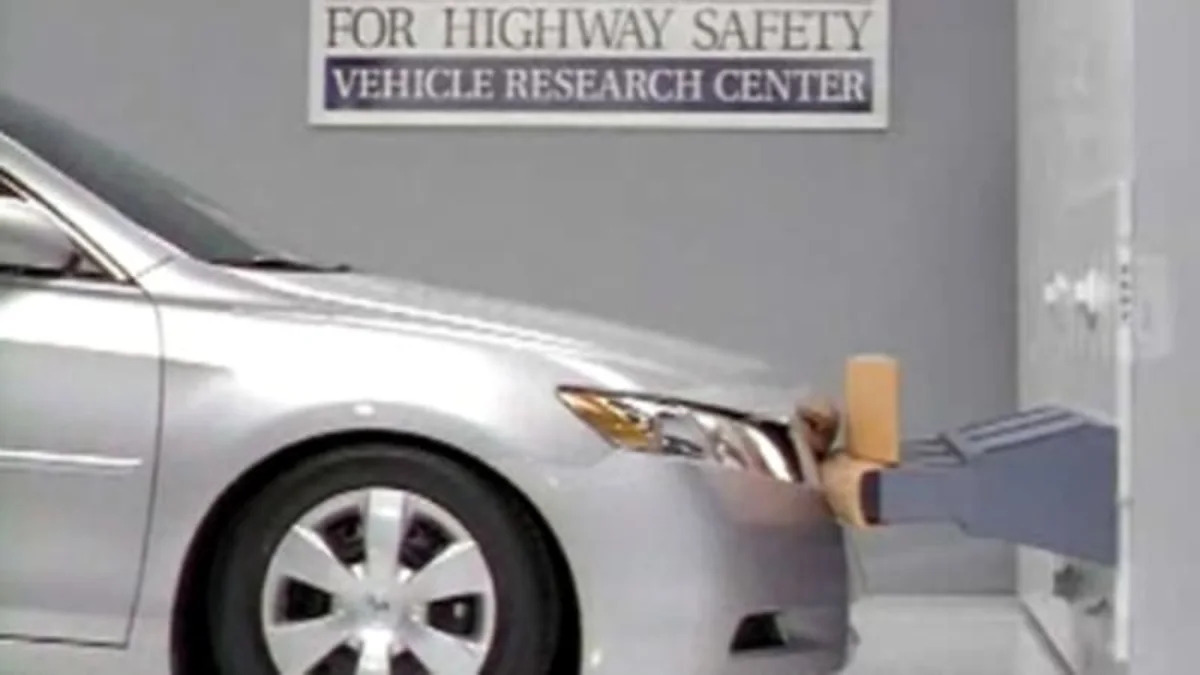As much as we like to think our modern cars are getting better and safer, apparently they can't beat an old Escort when it comes to low-speed collision damage. The Insurance Institute for Highway Safety (IIHS) just released a report detailing their latest test results for the bumpers of midsize cars. More specifically, they tested how their bumpers held up to low-speed 3 and 6 mph impacts. "Most bumpers on midsize cars do little to resist damage in the kinds of low-speed collisions that are common in commuter traffic and parking lots," is how the report begins. And it only gets worse from there. Out of the 17 cars tested, only three managed to stay under the $1500 level for each of the four impact tests the agency conducted. "Our tests measure how well bumpers protect cars from damage in everyday bumps," says Institute president Adrian Lund. "The whole purpose of bumpers is to keep damage away from headlights, hoods, and other parts that are expensive to repair, but this purpose was accomplished in only two of the 68 tests we conducted. In the rest, what we found is that bumpers aren't up to the job."
And apparently they aren't even doing as good a job as a 1981 Ford Escort. That model was chosen because it is indicative of the kind of bumpers required in the pre-Reagan-era 5 mph crash standards. Reagan rolled back the standard to 2.5 mph starting in 1982 and since then, bumpers have never been the same. The test itself changed a couple of times and now the IIHS is using a three and six mph battery of tests that tries to approximate the kinds of front and rear impacts that are the most common in the real world. They state that these low speed impacts, with sub $4,500 insurance claims, end up accounting for more than $6 billion in claims each year. Newer auto designs, particularly in the bumpers, often lead to mismatched bumper heights in collisions. If the impact isn't a straight bumper-on-bumper affair, one vehicle's bumper will often over- or under-ride the other's, striking the other vehicle's grille and/or lights, which are more expensive to repair. The full report explains the testing procedures more thoroughly and gives a detailed analysis of the costs incurred by each of the tested cars. Total combined damage for the four tests ranged from $4,277 for the Mitsubishi Galant, to more than $9,000 for the VW Jetta and Nissan Maxima.
[Source: IIHS]
And apparently they aren't even doing as good a job as a 1981 Ford Escort. That model was chosen because it is indicative of the kind of bumpers required in the pre-Reagan-era 5 mph crash standards. Reagan rolled back the standard to 2.5 mph starting in 1982 and since then, bumpers have never been the same. The test itself changed a couple of times and now the IIHS is using a three and six mph battery of tests that tries to approximate the kinds of front and rear impacts that are the most common in the real world. They state that these low speed impacts, with sub $4,500 insurance claims, end up accounting for more than $6 billion in claims each year. Newer auto designs, particularly in the bumpers, often lead to mismatched bumper heights in collisions. If the impact isn't a straight bumper-on-bumper affair, one vehicle's bumper will often over- or under-ride the other's, striking the other vehicle's grille and/or lights, which are more expensive to repair. The full report explains the testing procedures more thoroughly and gives a detailed analysis of the costs incurred by each of the tested cars. Total combined damage for the four tests ranged from $4,277 for the Mitsubishi Galant, to more than $9,000 for the VW Jetta and Nissan Maxima.
[Source: IIHS]


Sign in to post
Please sign in to leave a comment.
Continue